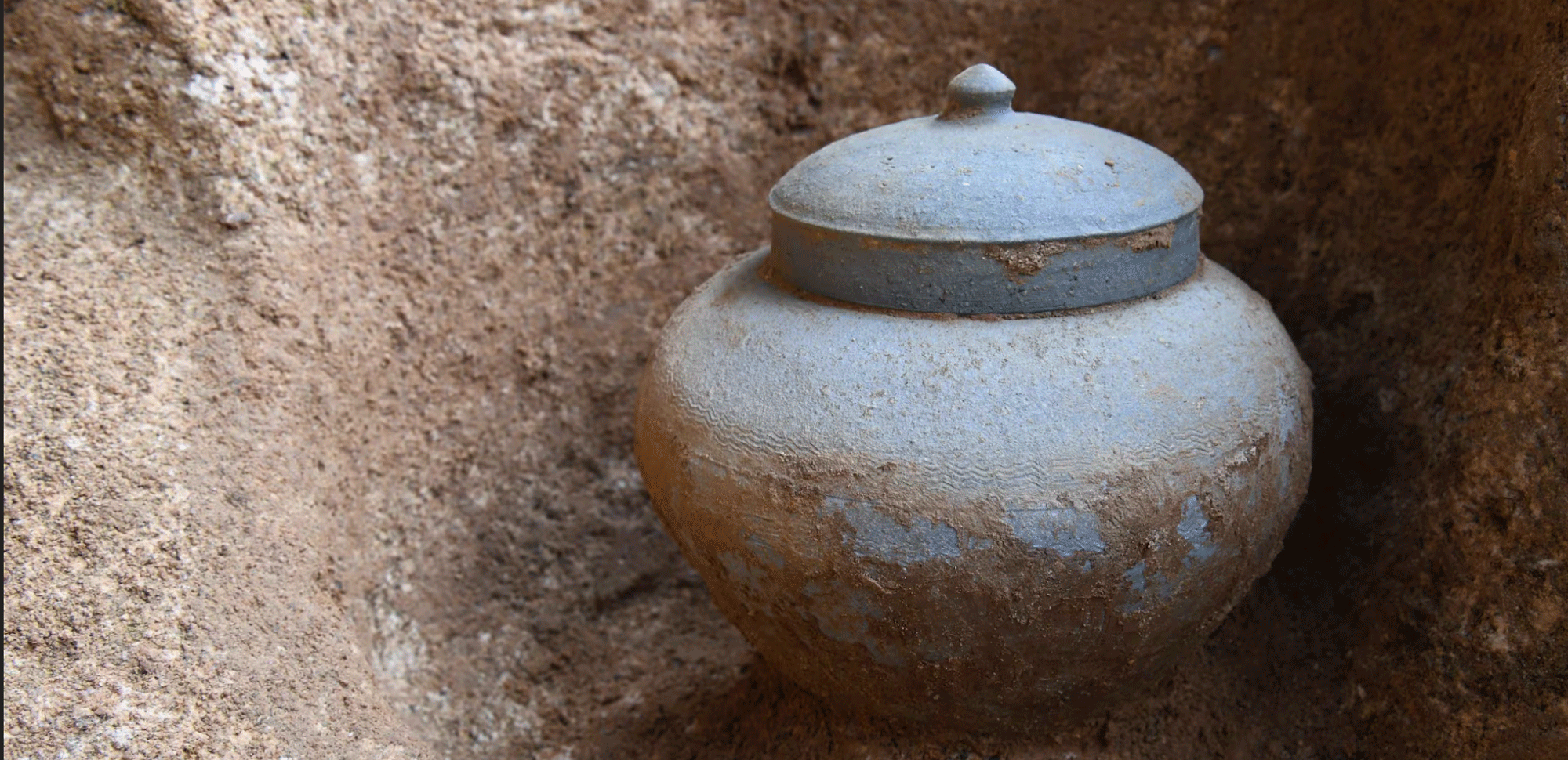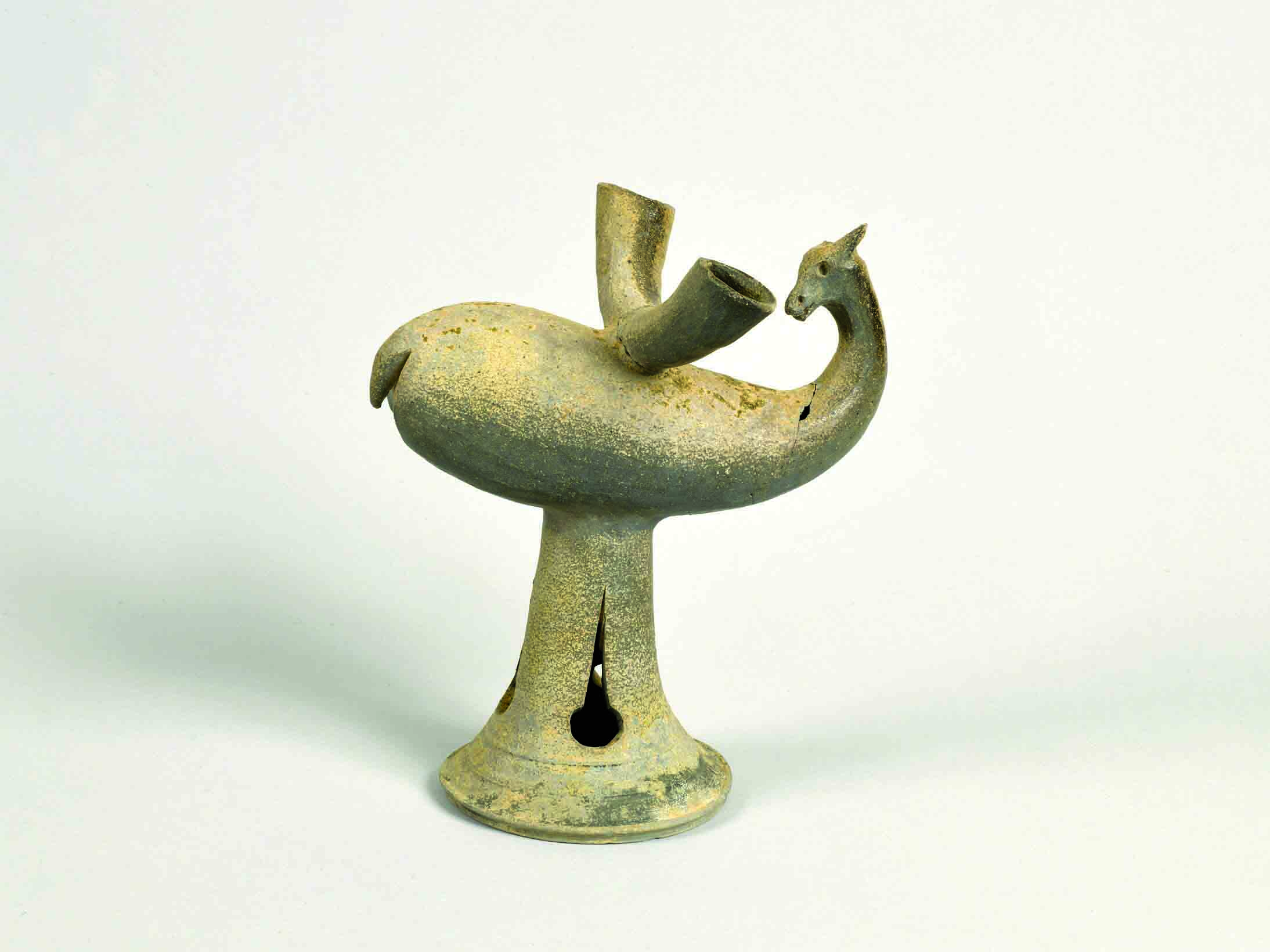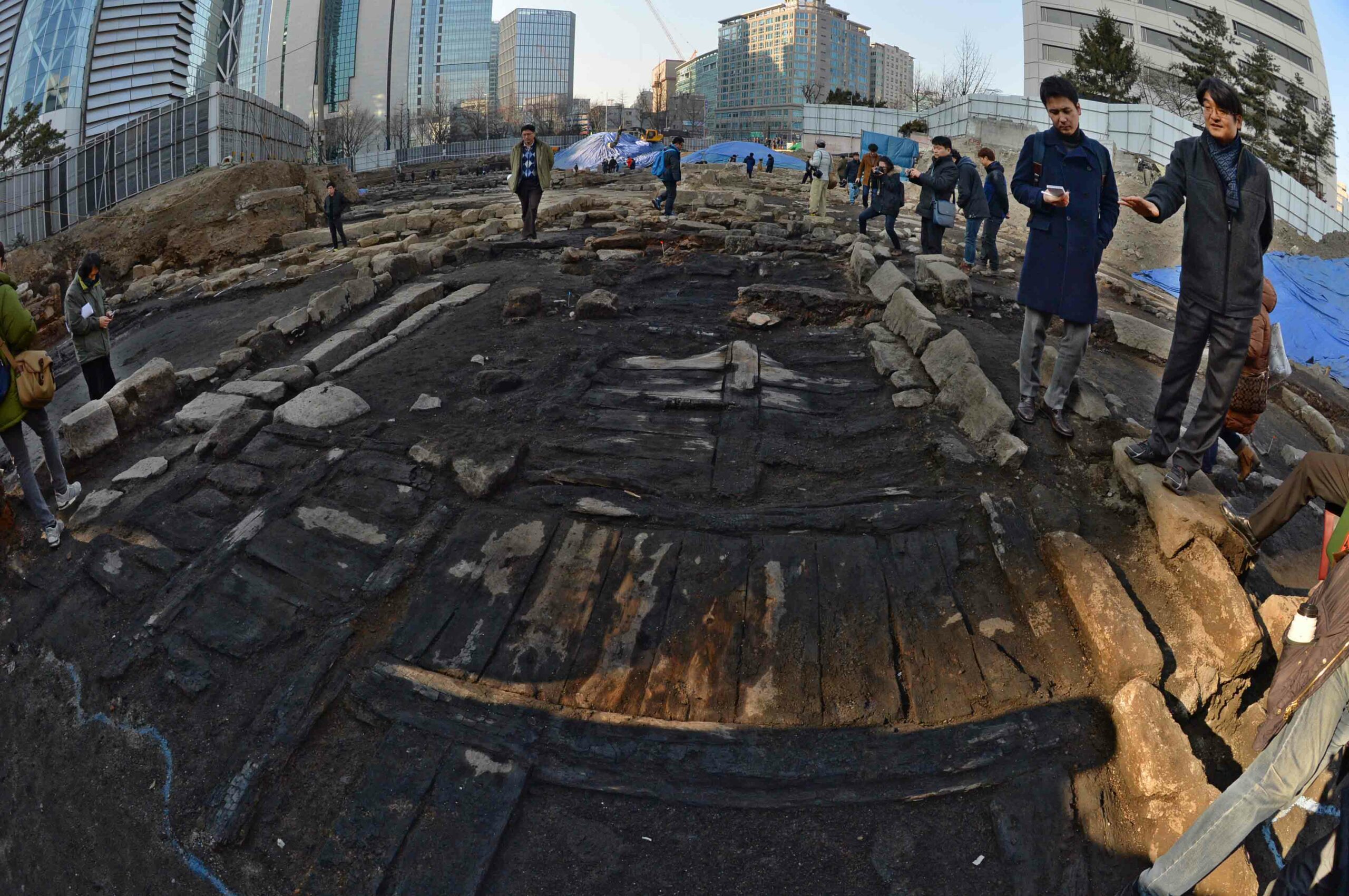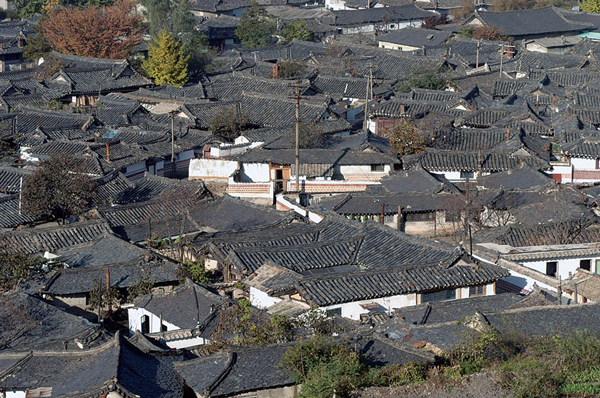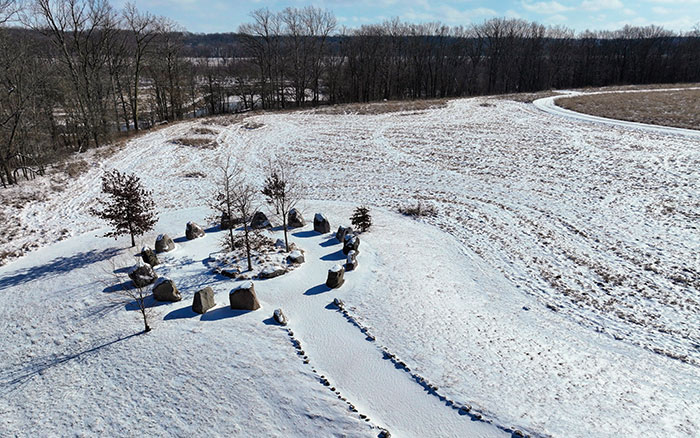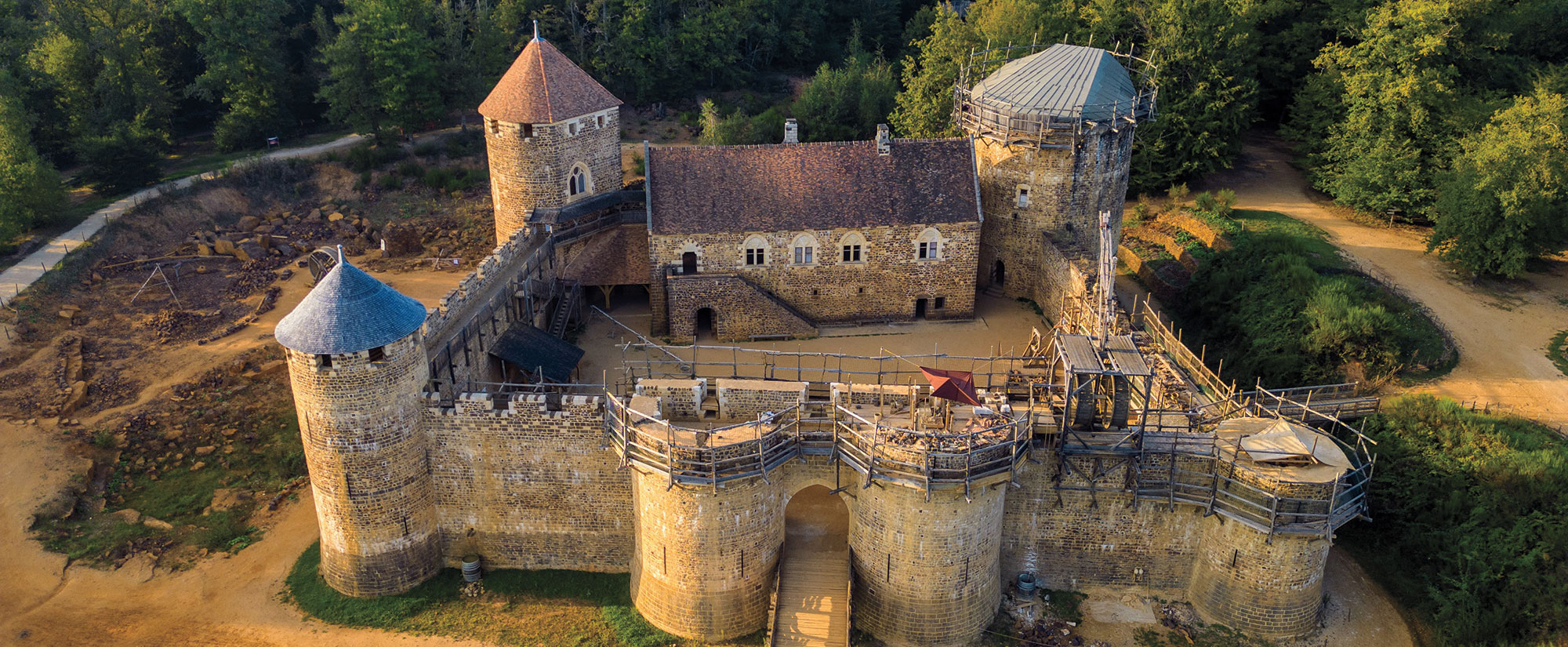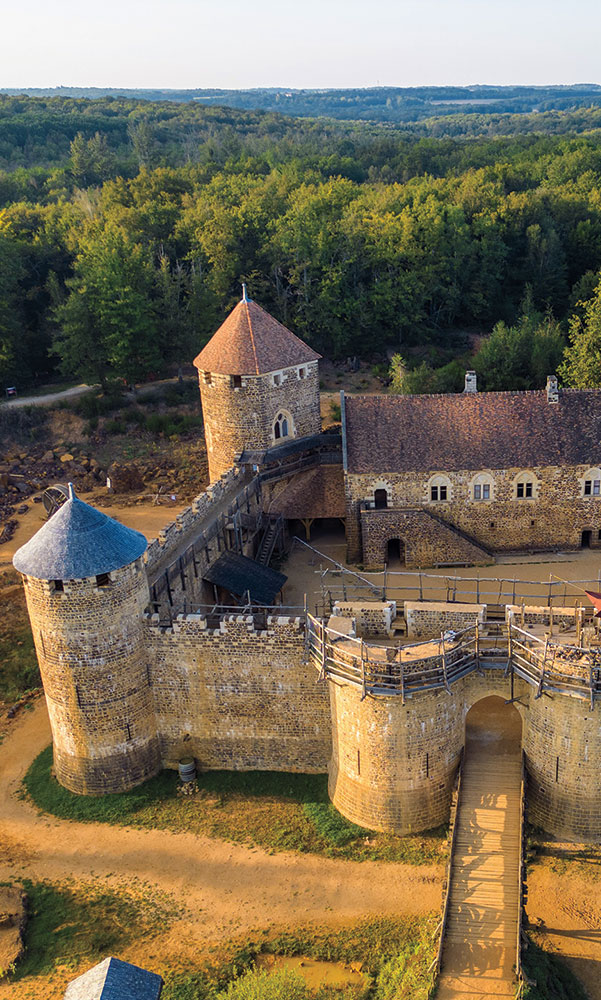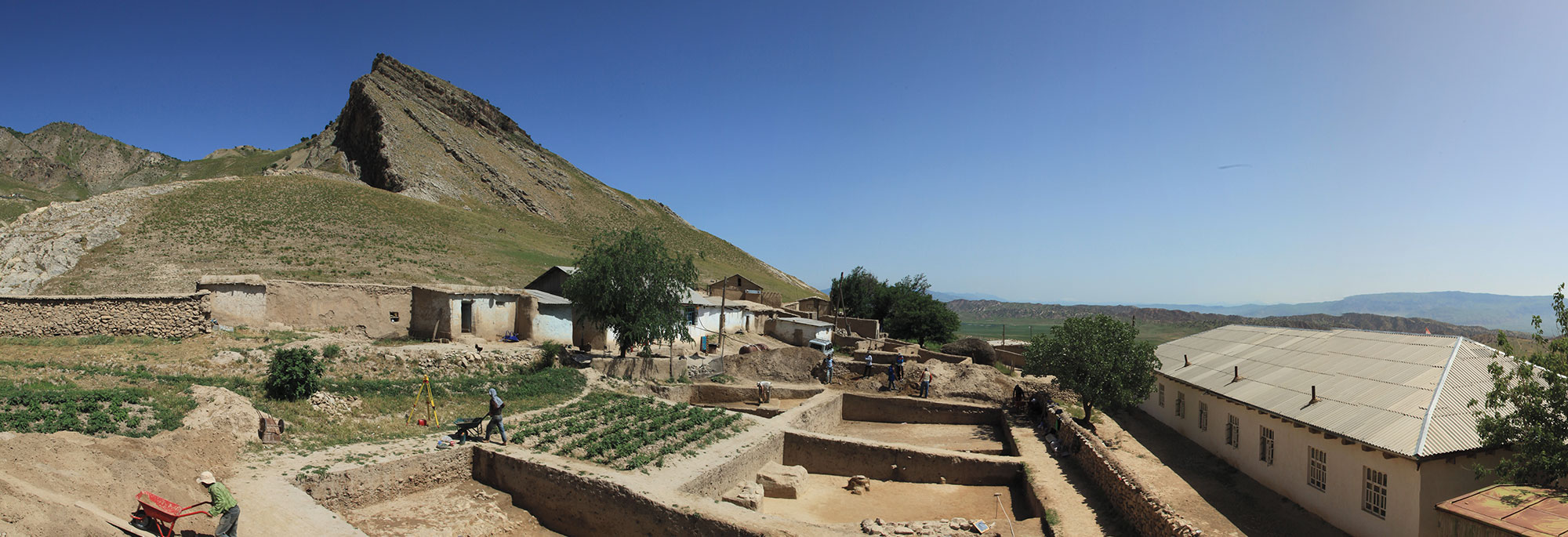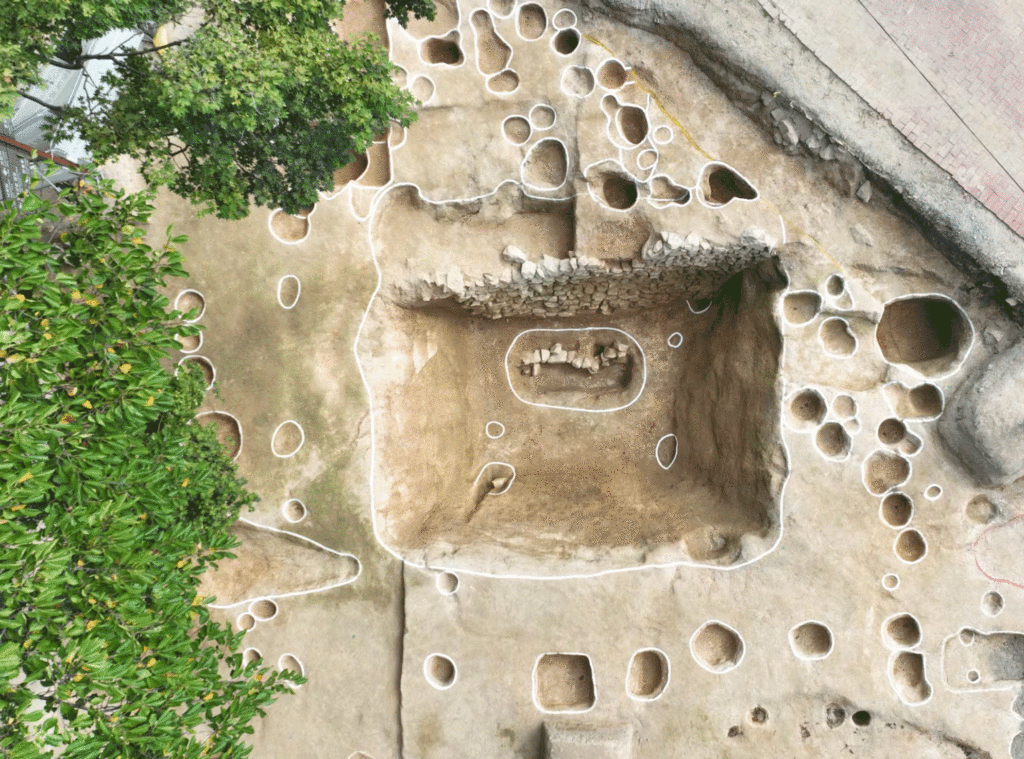
BUYEO, SOUTH KOREA—The Chosun Daily reports that an ice-storage facility has been found at the Busosanseong Fortress, which is located in southwestern South Korea, by a team of researchers from Korea’s National Research Institute of Cultural Heritage, Buyeo. The fortress was constructed as a royal stronghold during the Sabi period, between A.D. 538 and 660. The exterior of the ice house was rectangular in shape, while the interior featured a U-shape excavated from the bedrock measuring about eight feet deep. Stones were later added to reduce the size of this space. A pit in the center of the floor is thought to have served as a drainage reservoir. A lidded jar found in the structure has been identified as a jijingu, a ritual item thought to have been buried at the beginning of construction as an offering for the successful completion of the project. Five Chinese wushu coins were found inside the jar. Such coins were first minted in 118 B.C. and remained in circulation for nearly 750 years. To read about the excavation of tenth-century royal Korean palace go to "North Korea's Full Moon Tower."


